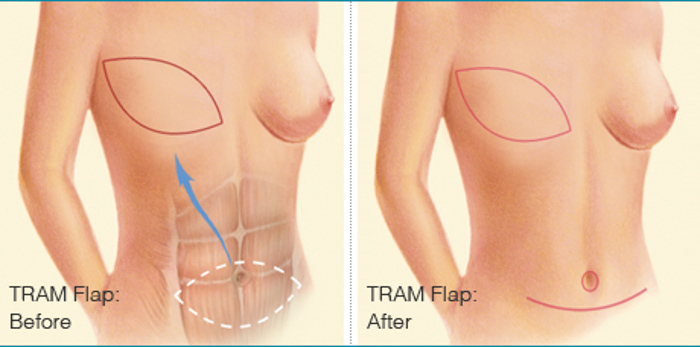Breast reconstruction using your own tissue without the use of implants is called autologous (referring to your own tissue) flap surgery. An autologous flap procedure uses a combination of skin, fat, and/or muscle that is moved from areas such as your abdomen, upper back, upper hip, or buttocks to the chest where it is shaped into a new breast. Not every woman is a candidate for this type of breast reconstruction, and it is best to discuss the pros and cons of these procedures with your surgeon.
TRAM (transverse rectus abdominus muscle) flap procedure harvests abdominal tissue. This is the most common method of breast reconstruction using the patient’s own tissue. It uses the lower abdominal skin, fat and rectus abdominal muscle. In the TRAM procedure, the harvested flap’s blood vessels are not severed, thereby maintaining the tissue’s connection to the original (belly tissue) blood supply.
Since the patient’s own body tissue is used, the result is a very natural breast reconstruction. Also the patient has the benefit of a flatter looking abdomen.

You should consider a TRAM flap breast reconstruction if you:
If you have further questions or would like to schedule a breast reconstruction consult, please contact us.
For over a century, a leader in patient care, medical education and research, with expertise in virtually every specialty of medicine and surgery.
About BWH